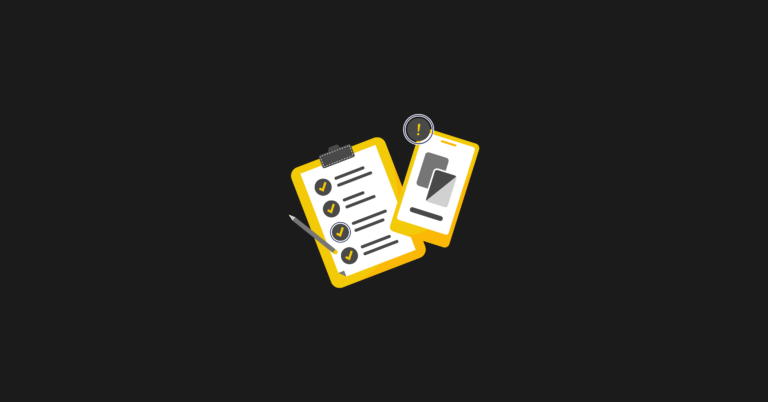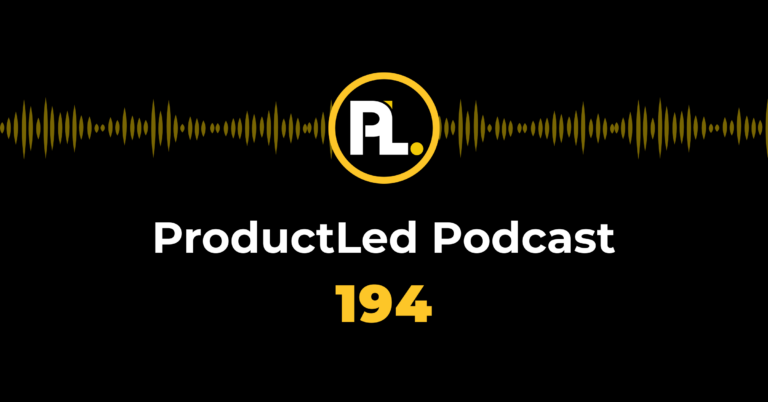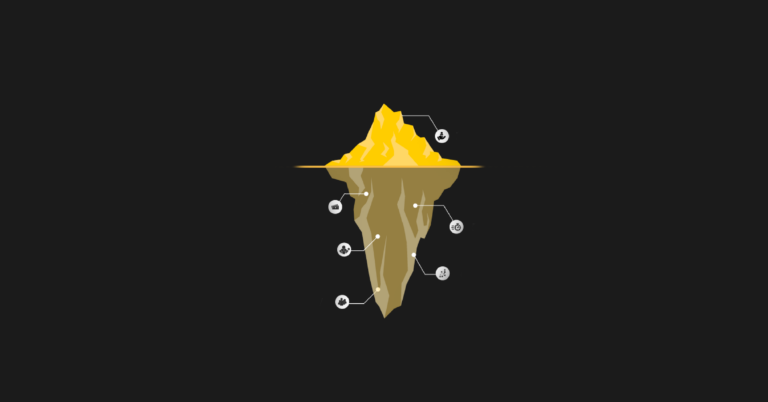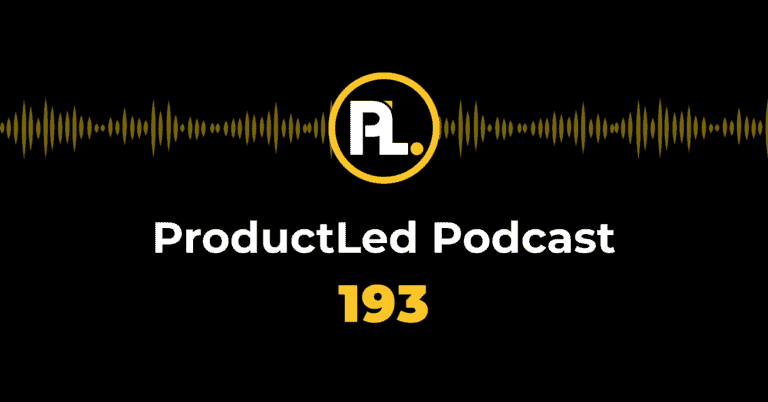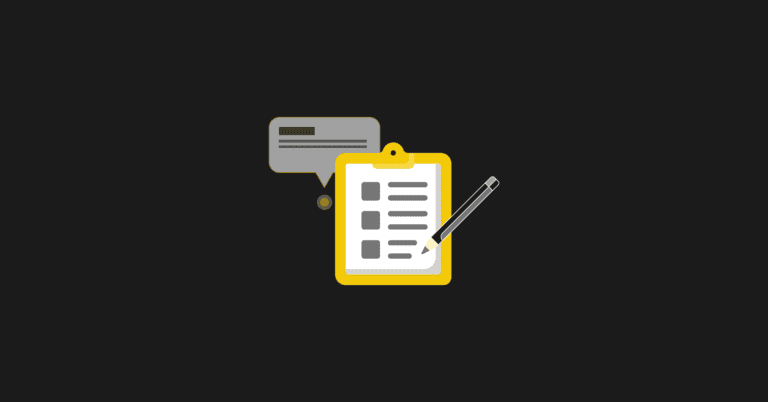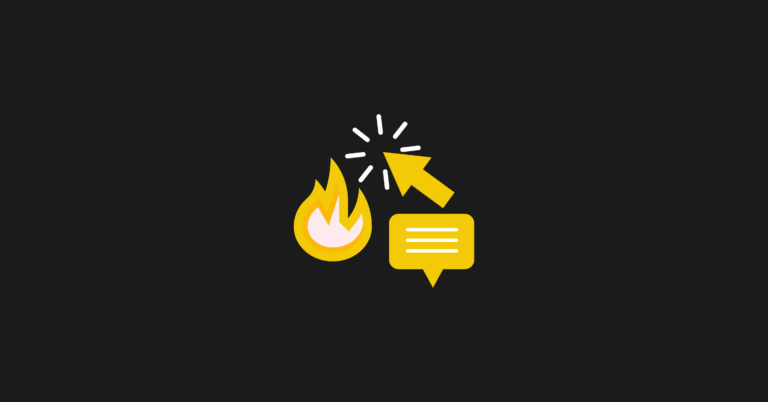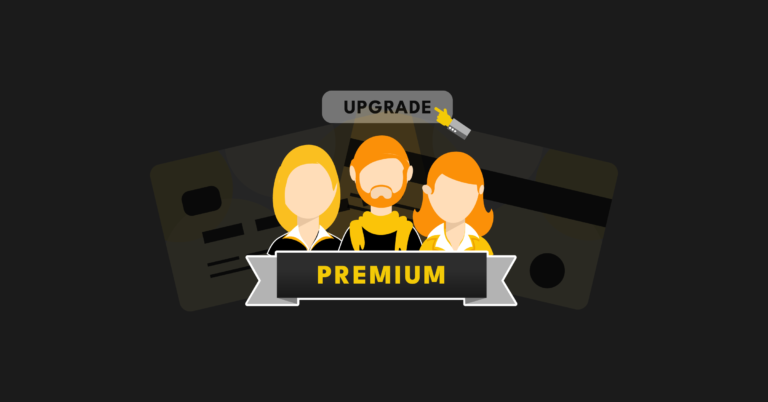Your SaaS strategies for acquisition, conversion, and retention are crucial for the success of your customer journey and the overall growth of your product-led company.
Most founders employing a product-led growth (PLG) strategy assume that once they acquire a customer, they will convert into a paying one shortly after. However, this is often not the case.
Even after signing up, new users generally don't fully understand how a product will help them. In this scenario, prioritizing retention metrics becomes essential, and businesses must understand the user journey and leverage that information to convert users into paying customers.
In this article, we cover the intricacies of acquisition and retention marketing at MongoDB, a developer data platform, further outlining three fundamental principles to master the art of customer conversion and loyalty.
Let's get into it.
Acquisition vs. Retention
User acquisition is the process of bringing in new users. In contrast, user retention is focused on maintaining and nurturing the relationship with existing users to ensure they continue using the product or service.
Both components are crucial for sustainable growth in a product-led business model.
MangoDB adopts a holistic approach to customer conversion, acting as the crucial link between acquisition and retention strategies, ensuring users become loyal, long-term customers.
User Acquisition Strategies
You need to employ the right strategies and tactics to effectively acquire new users. The acquisition side of MongoDB is responsible for bringing in quality registrations and users interested in the company’s Atlas and Enterprise Advanced plans.
User acquisition strategies aim to bring potential users into the product's ecosystem, typically starting from the top of the sales or user funnel.
Here are three common strategies for product-led user acquisition:
- Content marketing involves creating valuable content to attract potential users, establish authority, and build trust, leading to increased brand awareness and organic website traffic.
- Referral programs incentivize existing users to refer others, driving user acquisition, fostering a sense of community, and enhancing loyalty.
- Partnerships and integrations expand your reach by collaborating with other companies or connecting with popular platforms, tapping into their user base to acquire new customers.
SaaS companies rely on effective user acquisition strategies to fuel growth and their user base. The goal is to attract new users who are genuinely interested in their product and are more likely to convert into paying subscribers. Nevertheless, a common challenge arises when users struggle to see how the product solves their pain, preventing them from reaching that pivotal “Aha!” moment.
User Retention Strategies
User retention, on the other hand, focuses on keeping existing users engaged, satisfied, and active within the product or service.
At MongoDB, the retention marketing team is responsible for the post-registration journey of users. Her team aims to activate, re-engage, and retain users who have already registered for MongoDB's data services.
User retention strategies prevent churn and encourage ongoing usage and loyalty.
3 Key Principles for Acquisition and Retention Alignment
Harmonizing the efforts of acquisition and retention departments is vital for establishing a unified approach to customer satisfaction and loyalty.
In this section, we’ll explore three fundamental principles that drive this alignment at MongoDB, offering valuable insights for your company.
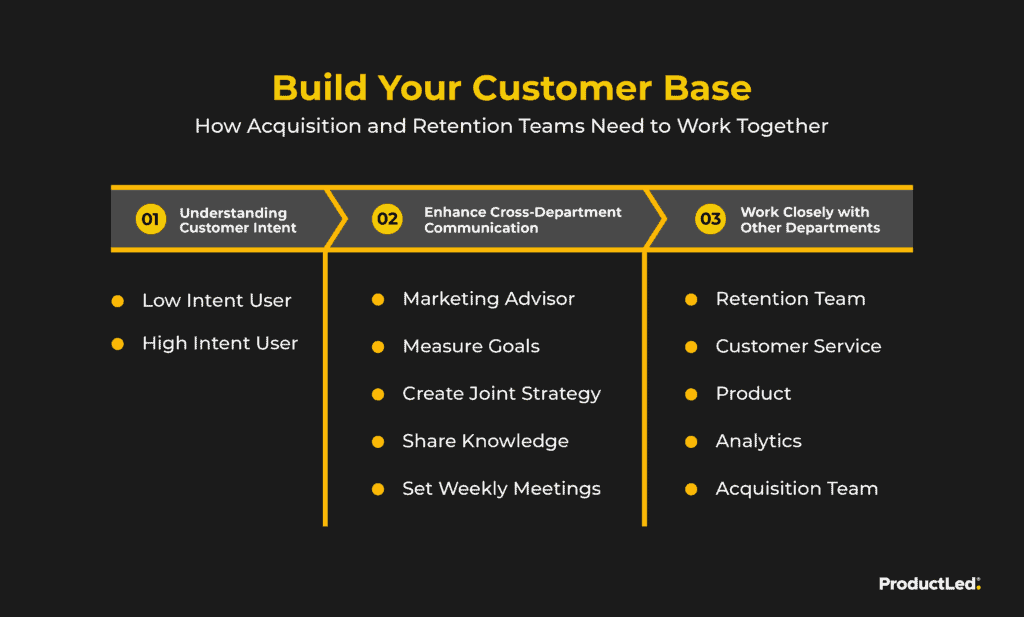
1. Understand and Leverage Customer Intent
An active user needs an outstanding experience with the product to convert into a customer. The first step toward this outcome starts with understanding the user’s intent.
Buyer intent is the likelihood of a user converting into a paying customer within a certain period. There are low-intent and high-intent buyers.
At MongoDB, product-qualified leads (or PQLs) play a pivotal role in their acquisition strategy. The acquisition team's approach to defining PQLs involves users with existing accounts who engage in specific actions.
These PQLs are categorized into high-intent and low-intent groups. High-intent PQLs are individuals familiar with both Mongo and Atlas, while low-intent PQLs may not have any prior knowledge of either.
Then, the retention team at MongoDB assesses the conversion rates of different segments from the registration stage to becoming active users or customers. This data is then used to create tailored user experiences depending on the perceived intent of the users. For instance, users classified as low intent are provided with engaging and educational content to help them grasp the value of using MongoDB.
Low-Intent Buyers
Low-intent behavior is when a potential customer signs up to learn more about the product and how it will help them achieve their business goals.
These buyers require more attention because they are still exploring the product and haven't decided to become paid active users. At this stage, a company may need to apply the following customer retention strategies to move the customer along the sales process:
- Offer more product information and educate them on its functionalities.
- Demonstrate the product value.
- Consistently get in touch to help them become an expert.
One study found that a 5% increase in retention rates may lead to a profit increase of up to 95%, according to ProfitWell.
High-Intent Buyers
High-intent buyers are likely to convert quicker when given the right push.
To move buyers along the sales pipeline, you may:
- Connect with them to learn what stops them from joining your customer base.
- Offer them a customized plan to address their concerns.
Once high-intent buyers turn into paying customers, they will likely be open to premium product features, making them ideal customers for upselling and cross-selling.
It's worth the time and effort to understand buyer intent to acquire new consumers. According to ProfitWell, 65% of a company's business comes from existing customers, and that statistic applies with even greater force to the SaaS industry than to other sectors.
You can build multiple buyer journeys by segmenting them and tracking conversion rates across all platforms once you understand the user's intent from registration to the moment they become a paying customer. This process helps you better connect and communicate the product's value to buyers.
2. Cultivate Cross-Departmental Communication to Enhance Customer Experience
In product-led marketing, prioritizing the customer experience is paramount.
After all, a customer's decision to upgrade to a paid plan hinges on satisfaction with the product and may churn instead.
Furthermore, satisfied customers are more likely to evolve into valuable repeat customers. According to Gartner research, approximately 80% of future revenue for a SaaS publisher will come from around 20% of current customers. These loyal consumers not only make multiple purchases but also act as enthusiastic advocates who champion products.
Once a user signs up for the basic plan, the customer acquisition department must pass on the buyer behavior history or context to the retention department to continue connecting and engaging with customers meaningfully.
Take MongoDB, for instance. We understand the importance of customer experience and are committed to achieving absolute alignment between our acquisition and retention teams.
Our shared vision encompasses clearly defined conversion rates, registration targets, and customer satisfaction goals. We ensure our operations are fully synchronized, meticulously coordinating our joint efforts for the next four quarters. Our ultimate objective is to launch these initiatives simultaneously, maximizing the collective impact we aspire to achieve.
How to Better Align SaaS Teams
The acquisition and retention departments must work together to deliver an outstanding customer experience. However, this is easier said than done. Only 40% of companies and 30% of agencies have an equal focus on acquisition and retention, as reported by Invesp.
Cross-department collaboration helps remove the chances of miscommunication.
The following actions within your company can help:
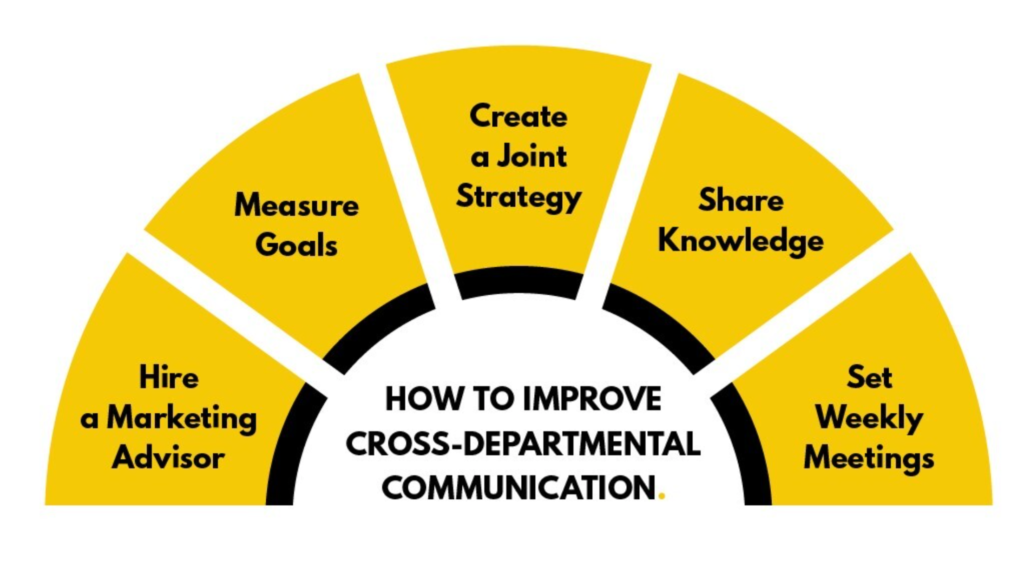
Hire a Marketing Advisor
Having a marketing advisor as part of your sales team helps a company build an effective marketing strategy by aligning goals and overseeing inter-department collaboration. They can also help the acquisition and retention departments overcome issues prioritizing goals and dealing with overlapping processes.
Measure Goals
You won't know if your plans work unless you set goals and measure performance. For product-led companies, measurement metrics like average revenue per user, customer lifetime value, and net churn are strong measurement indicators.
When the acquisition and retention departments work together to offer exceptional customer experience, it's critical to measure goals closely and to have different tiers of metrics. User buyer intent data to build targeted programs to acquire new buyers and share relevant data with each department to match top-of-the-funnel activities for a consistent active user experience.
The acquisition and retention departments shouldn't work as silos. Doing so leads to a disconnected sales funnel, making it difficult to bridge the gap between the two functions.
Create a Joint Strategy
Acquisition of a customer is one initial step in the PLG model, as a company may barely make any profit if those users don't convert into paying customers.
As a result, both the acquisition and retention departments need to work together to ensure they're attracting high-intent buyers and converting the low-intent ones to become high-intent.
The first step in this collaboration is to set a joint strategy, which makes achieving aggressive growth goals possible.
Share Knowledge
Sharing expertise and resources is critical for fostering collaborative efforts. Regularly share informative articles and helpful courses. Observing and discussing industry developments with team members is also beneficial.
Set Weekly Meetings
Establish a weekly meeting. One-on-ones between the acquisition and retention departments are an excellent opportunity to discuss what they are working on, the quality of leads the top-of-the-funnel cadence generates, and the goals they plan to achieve. These activities ensure that both departments are aligned and have synchronized goals.
3. Work Closely With Additional Departments
As mentioned above, departments in silos result in disjointed processes and a below-par user experience.
In addition to fostering alignment, acquisition and retention teams must establish close collaborations with other departments: Customer Success, Product, and Analytics.
Here's why working with these departments is crucial:
Customer Success Team
The Customer Success team provides the best qualitative feedback regarding what customers think about the product. This feedback includes insights into customer preferences, likes, dislikes, and any roadblocks they encounter. It is essential for understanding user sentiments and improving the product to enhance retention and overall satisfaction.
Product Team
The Product team is essential because it ensures that the product changes and user experience enhancements are aligned with the teams' strategies. This alignment helps attract and retain users effectively while delivering a product that matches user expectations and needs.
Analytics Team
Analytics can provide the acquisition and retention teams with data-driven insights, performance monitoring, and the ability to improve their strategies continuously. This collaboration ensures that their efforts are efficient and effective in attracting and retaining users.
FAQs About Customer Acquisition and Retention
Why do companies focus more on acquisition than retention?
Companies focus more on acquisition to build their client base, boost short-term profits, and experience rapid growth. Although customer acquisition cost (CAC) is generally higher than retaining current customers, acquiring customers is vital to attracting as many high-value users as possible.
What is the best strategy for customer acquisition and retention?
The best strategy for customer acquisition and retention is an ongoing collaboration between company departments to achieve a great customer experience. The acquisition and retention departments must establish measurable goals and share relevant data metrics to match top-of-the-funnel activities for a consistent active user experience.
Is customer retention or customer acquisition more critical?
A company needs to create a marketing strategy with balanced customer acquisition and customer retention efforts. According to Invesp, one study showed that 44% of companies have a greater focus on customer acquisition versus 18% that focus on retention. Segmenting your customer base, sending relevant emails, and creating engaging content are effective marketing programs to increase retention.
Improve Customer Activation for Your SaaS Company
Effective acquisition and retention strategies are crucial for the success of any PLG business.
By understanding and leveraging customer intent, cultivating cross-departmental communication, and collaborating with additional departments, you can align your teams and optimize the customer experience.
Don't overlook the importance of customer retention - it's just as critical as acquisition. For guidance on implementing these strategies into your product-led model, check out the nine components of the ProductLed GTM System. Our founder, Wes Bush, developed this free system to help you scale your self-serve revenue faster without working harder.

